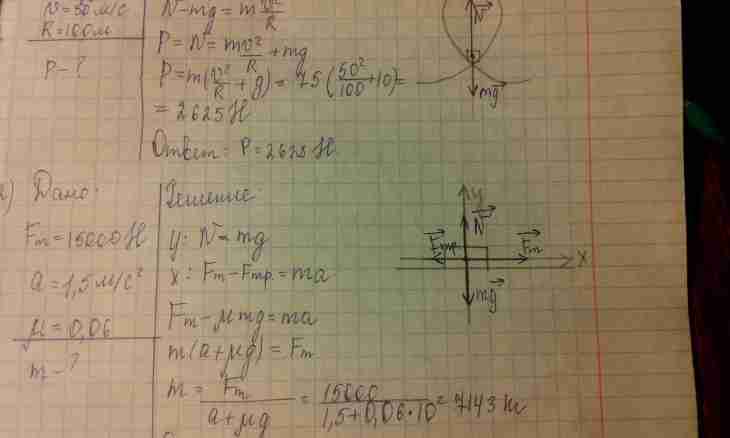The moment of inertia of a body or the system of material points concerning an axis is determined by the general rule for the moment of inertia of a material point concerning any other point or the system of coordinates.
It is required to you
- The textbook in physics, the sheet of paper, a pencil.
Instruction
1. Read in the textbook in physics the general definition of the moment of inertia of a material point concerning any system of coordinates or other point. It is known that this size is defined by the work of mass of this material point on a distance square from this point which moment of inertia is defined, prior to the beginning of the system of coordinates or to a point concerning which the inertia moment is defined.
2. Pay attention that in case it is several material points, then the moment of inertia of all system of material points is defined almost similarly. Thus, for calculation of the moment of inertia of a system of material points concerning any system of coordinates it is necessary to summarize all works of mass of points of a system on squares of distances from these points till the general beginning of a system of coordinates.
3. Notice that when instead of a point concerning which you calculate the inertia moment any axis is considered, the rule for calculation of the moment of inertia practically does not change. The difference is only in how the distance from material points of a system is defined.
4. Draw on the sheet of paper some lines, the representing considered axis. Near the line on the right and left side put several fat end, they will represent material points. Carry out perpendiculars from these points to the line of an axis, without crossing it. Pieces which you receive the axes which are actually normals to the line, and correspond to those distances that are used for calculation of the moment of inertia concerning an axis. Of course, your drawing shows a two-dimensional task, but in case of a three-dimensional situation the decision will be similar if to carry out perpendiculars in three-dimensional space.
5. Remember from a course of the beginnings of the analysis that upon transition from a set of discrete points to their continuous distribution, it is necessary to pass from summation on points to integration. Same treats a situation when you need to calculate the inertia moment concerning an axis of any body, but not the system of material points. In this case summation on points turns into integration on all body with the integration intervals determined by body borders. The mass of each point has to be presented in the form of the work of density of a point on volume differential. The differential of volume breaks into the work of differentials of coordinates on which integration is made.

